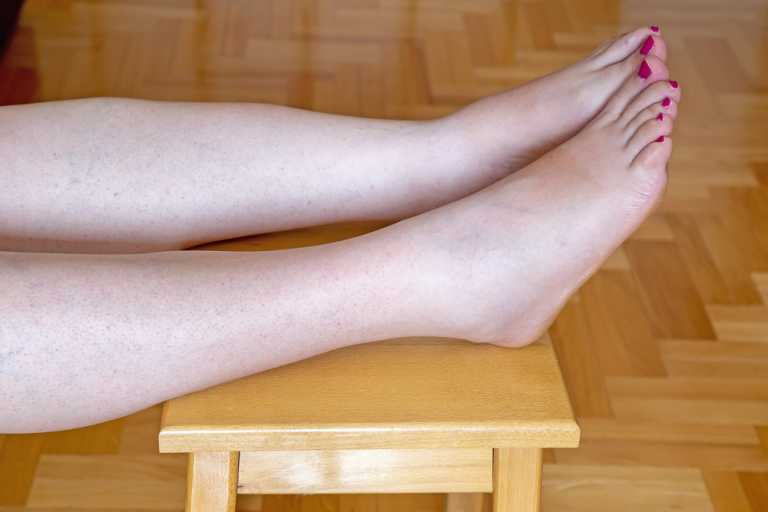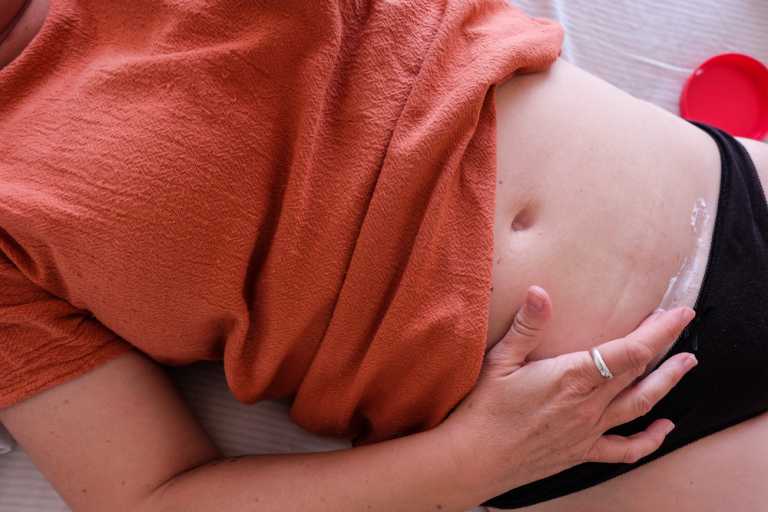Post-c-section life is wild. You’ve just had major abdominal surgery and have a tiny baby to look after, and you have to do it all without lifting, bending, or even standing up too fast.
Luckily, you’re tough. But the first time you drop a diaper, have to tie a shoe, or need a snack from a low cabinet, you’ll wonder, “When can I start bending after my c-section?” and “How can I make life easier while I wait?”
When Can You Bend Over After a C-Section?
You’ll be able to start bending either 4 to 6 weeks post-c-section or when you can bend pain-free.
Here’s a quick checklist to figure out whether or not you’re ready to bend:
- It’s been at least one month since your c-section.
- Your stitches have been removed or have dissolved.
- Your incision has healed.
- You don’t feel any pain when bending.
- You have no bleeding or discharge from your incision.
Everybody heals at different rates. So, while some moms can bend after a month, others might feel discomfort for 2 or 3.
You may heal slowly if:
- You’ve had an infection.
- You have diabetes.
- You’re overweight.
- You’ve had more than one c-section.
- You’ve done too much lifting, bending, or exercise too soon.
- You’ve had a vertical c-section.
Vertical vs. Horizontal C-Sections
95% of C-section incisions are low-transverse, which is a horizontal cut at your bikini line. The other 5% are made vertically from the navel down.
Your doctor might choose a vertical incision if your baby is in distress, as they’re around 1 minute faster than horizontal sections. You may also have a vertical incision if your baby is premature.
While your and your baby’s safety is the main priority, vertical sections are slower to heal. So, it might take a little longer before you can bend. Use the checklist above to see if you’re ready.
Why Can’t You Bend Over After a C-Section?
You might feel dizzy or unsteady in the first couple of days after your c-section. So, it’s a good idea to avoid bending, as it can worsen the dizziness, and you don’t want to risk falling.
For the next 2 weeks, you won’t be able to bend over, as it’ll be too uncomfortable. This is your body’s way of telling you that bending is off the table.
Between 2 and 4 weeks, you’ll feel more comfortable but should still avoid bending. This is because it puts pressure on your internal and external incisions, which won’t yet be fully healed.
What Happens if You Bend Over After a C-Section?
Bending over after a c-section can rip your stitches or cause your incisions to rupture.
When this happens to your external incision, it can cause the following:
- Pain
- Bleeding
- Slowed healing
- Infection
Occasionally, bending can cause your internal incisions to rupture. This is hard to spot at first, but you might experience symptoms like:
- Severe pain
- Hernia, which will look like a bulge or a lump near your incision
- Low blood pressure and dizziness
- A fever
- Pain during urination or bowel movements
- Constipation
How to Avoid Bending After a C-Section
So, now you know why it’s so vital to avoid bending. But how can you do it?
Prepare Your Space
If you’re having a planned c-section, this should be at the top of your prep list. If your cesarean was unexpected, you might need to call in a partner, friend, or relative for help.
Start by making a list of the things you’ll need to access. Then, make sure to store everything above waist height. Think about food prep, diaper changes, clothes, etc.
Use a Grabber
Even if you have everything stored high up, you’re likely to drop something at some point. This is where a grabber comes in. They’re handy sticks with a trigger mechanism for grabbing things just out of reach, like dropped muslins, diapers, and snacks.
Use Your Arms
If you really need to get down to reach something, support your weight on a chair and lower yourself to your knees.
Choose a Bedside Bassinet
Choose a bassinet that opens at bed height. Instead of bending to lift your baby, you can slide them out for nighttime feeds and cuddles.
Have Older Siblings Come Up to You
If you have older children, have them stand on a couch, step, or chair instead of bending down to them. This could be for hugs, tying shoes, buttoning coats, and all the other things you help with.
Try to make it fun for them by coming up with a cute name for it, like “giant mode,” or sprinkle them with imaginary grow dust. Then, make a big deal about how big, clever, and helpful they are. Remember to shrink them back down, though. Most older siblings still want to feel like your little baby sometimes.
Set up a Raised Changing Station
Set up your baby’s changing zone on a raised surface. You can use a purpose-made diaper changing station, the top of a dresser, or even a desk if you’d prefer to sit down.
However, you must never leave your baby unattended on a raised surface. Even if they’re too young to roll, they may squiggle themselves off. So, ensure you have everything you need before opening up that diaper!
If you have an older child who’s still in diapers, you can set up a raised changing station for them too. Again, you can buy a purpose-made one or set up steps to a safe surface.
Bathing Your Baby at Your Level
You won’t be able to bend over a bath to wash your baby, so bring them up to your level. You could use a standalone baby bath on a countertop or bathe them in the sink.
Again, never leave them unattended, and ensure there’s no way the bath could fall.
What to Do if You’ve Been Bending Too Much After a C-Section
If you’ve been bending too much and have pain, bleeding, or one of the other symptoms of a ruptured incision, call your doctor. They’ll be able to examine you to see if any damage has been done.
In most cases, they’ll advise you to take some extra rest and call in a partner or family member for support. If, however, there’s a bigger issue, they may prescribe antibiotics or further surgery.
The important thing is never to put off calling for help. Infections can be life-threatening, so the sooner they’re treated, the better.




